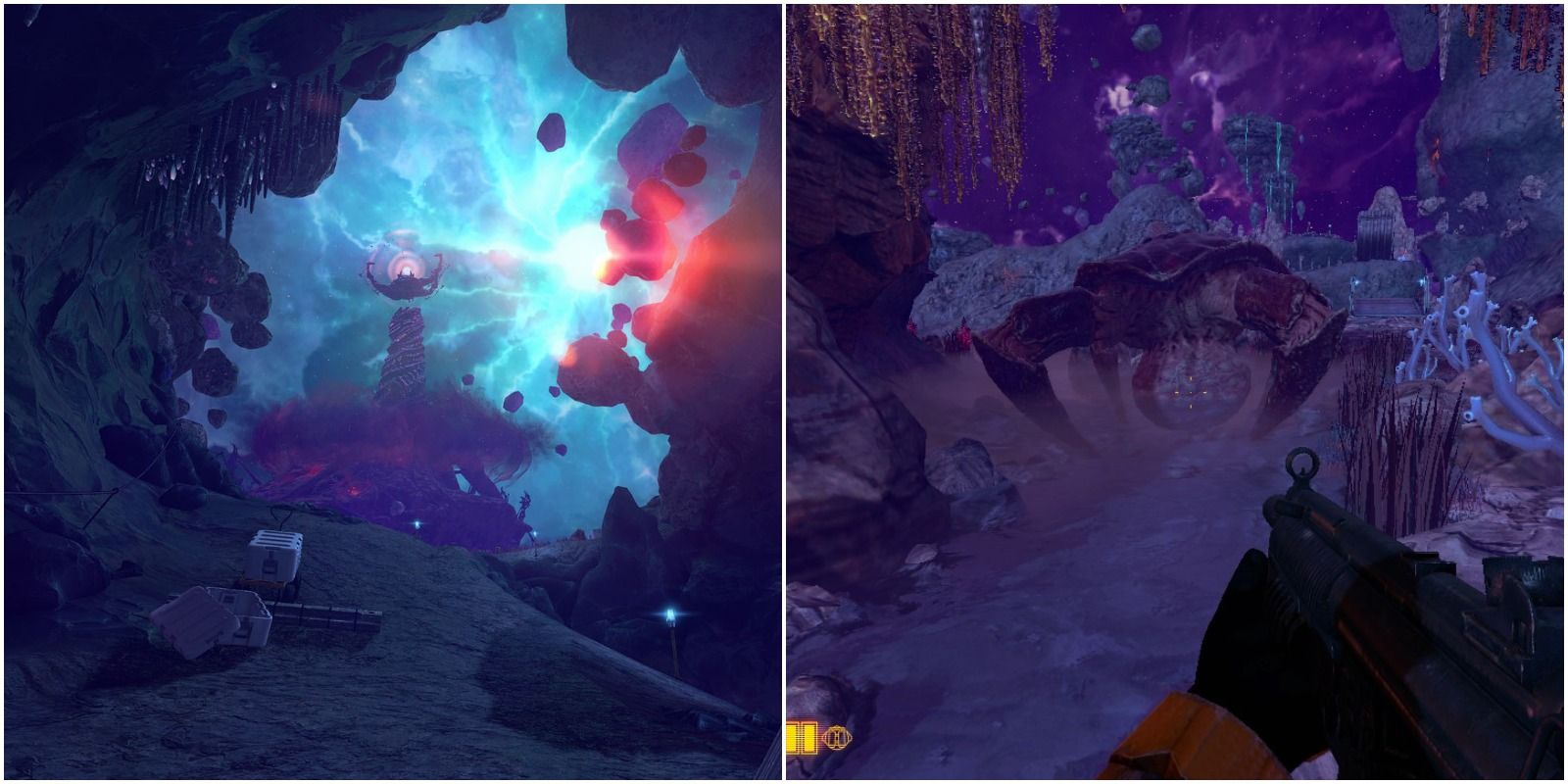
In 1998, Valve released a science fiction video game called Half-Life, which became a huge hit and a major influence on later first-person shooters. By the release of Half-Life 2, however, the original Half-Life was starting to show its age. This, combined with Valve unsuccessfully trying to port Half-Life to its source engine, sparked interest in the idea of revisiting the original game. A group of fans formed the development studio that became Crowbar Collective, which aimed to remake the original Half-Life in a manner more reminiscent of its improved sequel. This was the start of the project that became Black Mesa.
RELATED: 8 Game Sequels That Were Canceled For Strange Reasons
Black Mesa proved more ambitious than expected, taking nearly two decades longer to make than the game it was based on. It only received a commercial release in 2012, in beta form and missing the final act. It was not until 2019 that the game was finally completed and released in its entirety. Some of Half-Life's fan games don't always work. However, Black Mesa showed how a group of dedicated fans could make something worthy of the original developers. Many players even feel that the game has improved on its predecessor.
5 Introducing The Ability to Roll Grenades
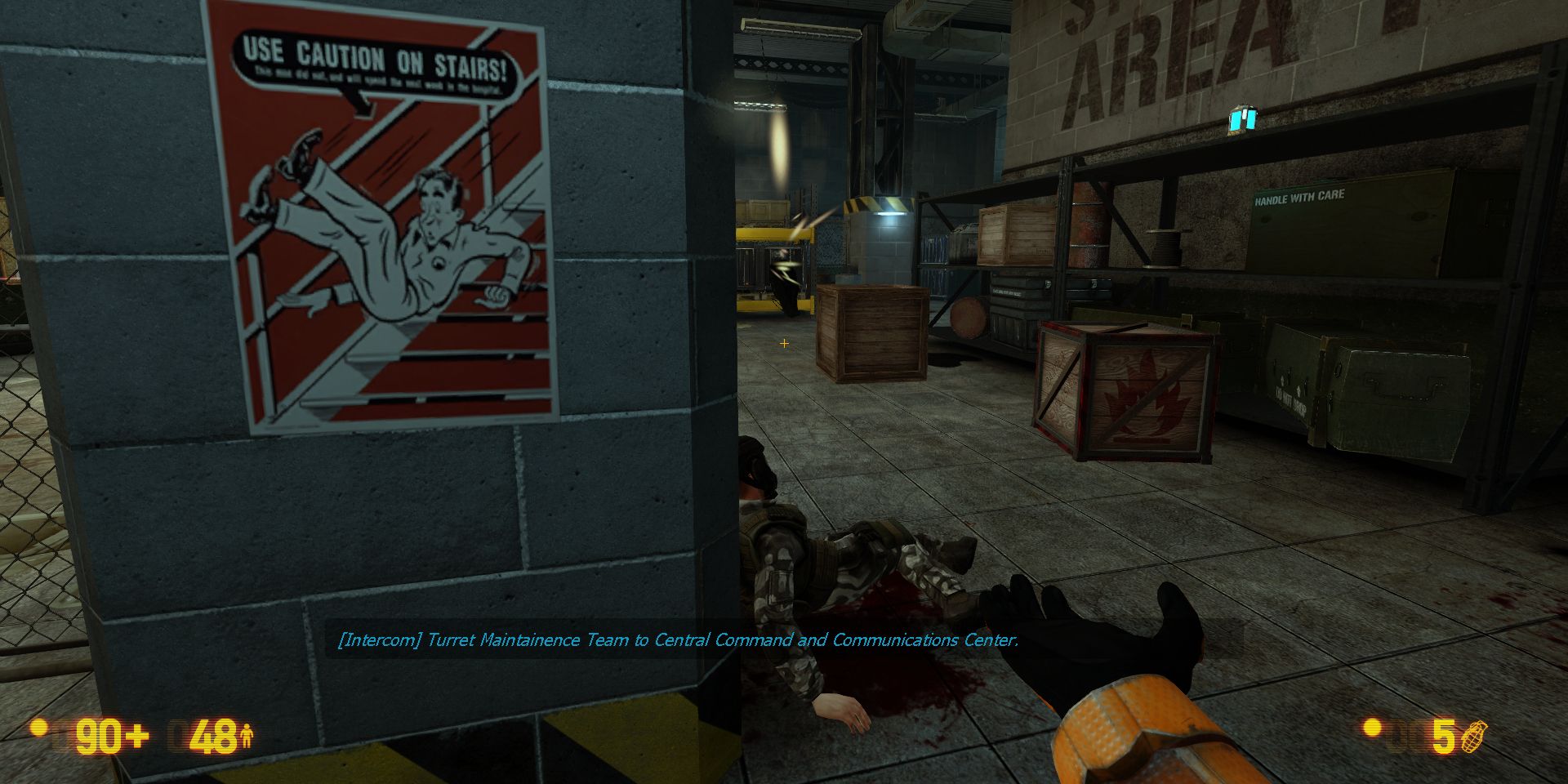
Both the original Half-Life and Half-Life 2 gave the player plenty of opportunities for explosions, the most popular of which was just using grenades. Grenades are a standard part of protagonist Gordon Freeman's arsenal, but he could only throw them in the general direction of his enemies. This was effective, but unreliable. It only worked if Gordon was facing them upfront, making it harder to use as an ambush.
Black Mesa changed this. In addition to throwing the grenade, Gordon now has the option to roll it instead. Rolling the grenade is much more precise than throwing it, and is also advantageous in close quarters. When done right, the delay before detonation is sufficient time for Gordon to find cover. The discretion of rolling also makes it an effective tactic for thinning groups of enemies before they see Gordon.
4 Encouraging More Varied Gameplay
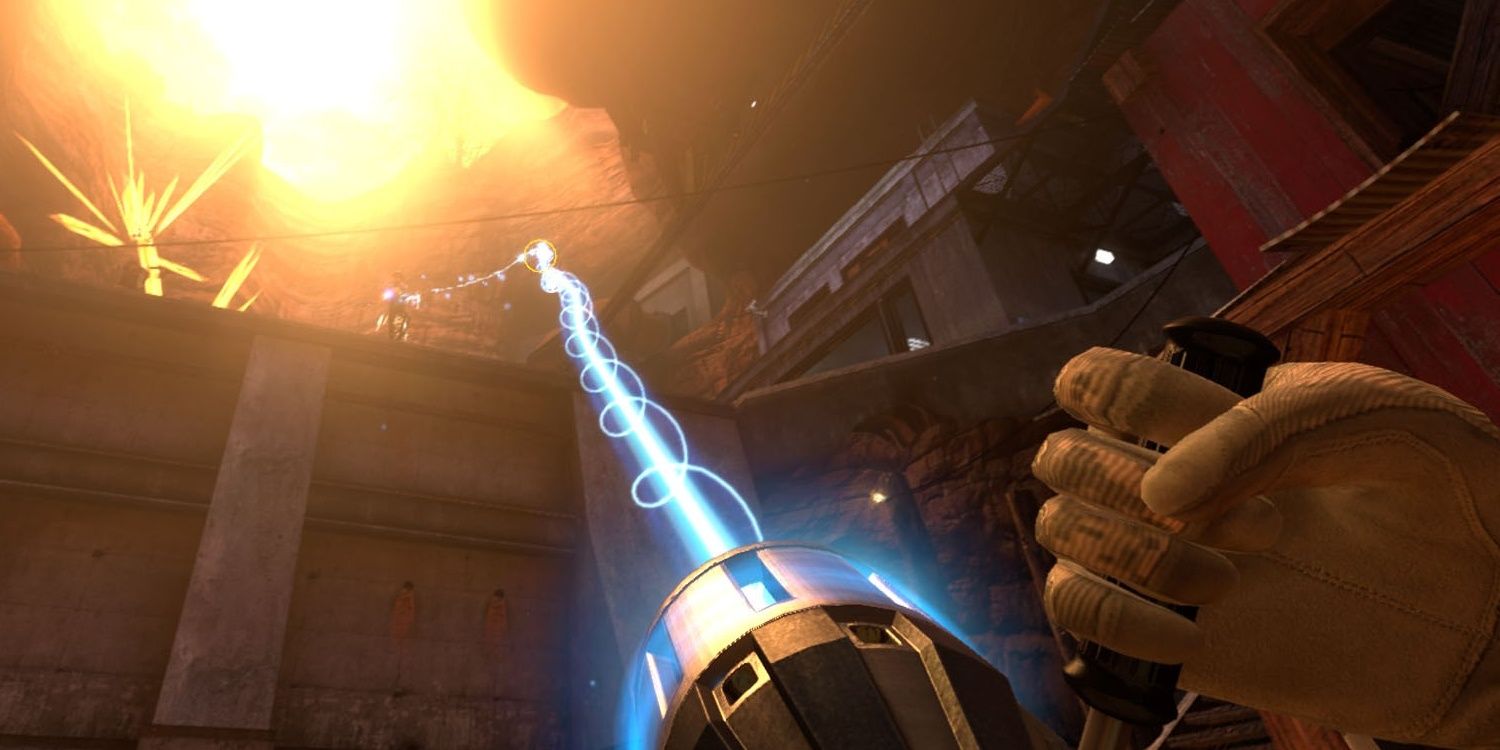
While Half-Life 2 is often classified as a shooter, it emphasized that Gordon couldn't solve every problem with a gun. The level set in Ravenholm encourages the player to conserve ammunition. Some levels give the player unique items to use. For example, Gordon can control antlions in the Sandtraps/Nova Prospekt section, or make use of Combine mines in Anticitizen One/Follow Freeman. The game even removes Gordon's weapons in the final level, forcing him to rely exclusively on the gravity gun.
RELATED: 10 Of The Best Half-Life 2 Mods
Black Mesa is not as overt, but it does occasionally require Gordon to rely on different tactics. This becomes most notable during the Xen portion of the game. Here, the player is encouraged to use their energy weapons over more conventional ones, like the MP5 and the pistol. The game accomplishes this partially through a growing presence of tougher, more resistant enemies, particularly the controllers. Conventional ammunition also becomes harder to obtain, but crystals throughout Xen will recharge the energy weapons, making them a more practical choice.
3 Incorporating Half-Life 2 Mechanics
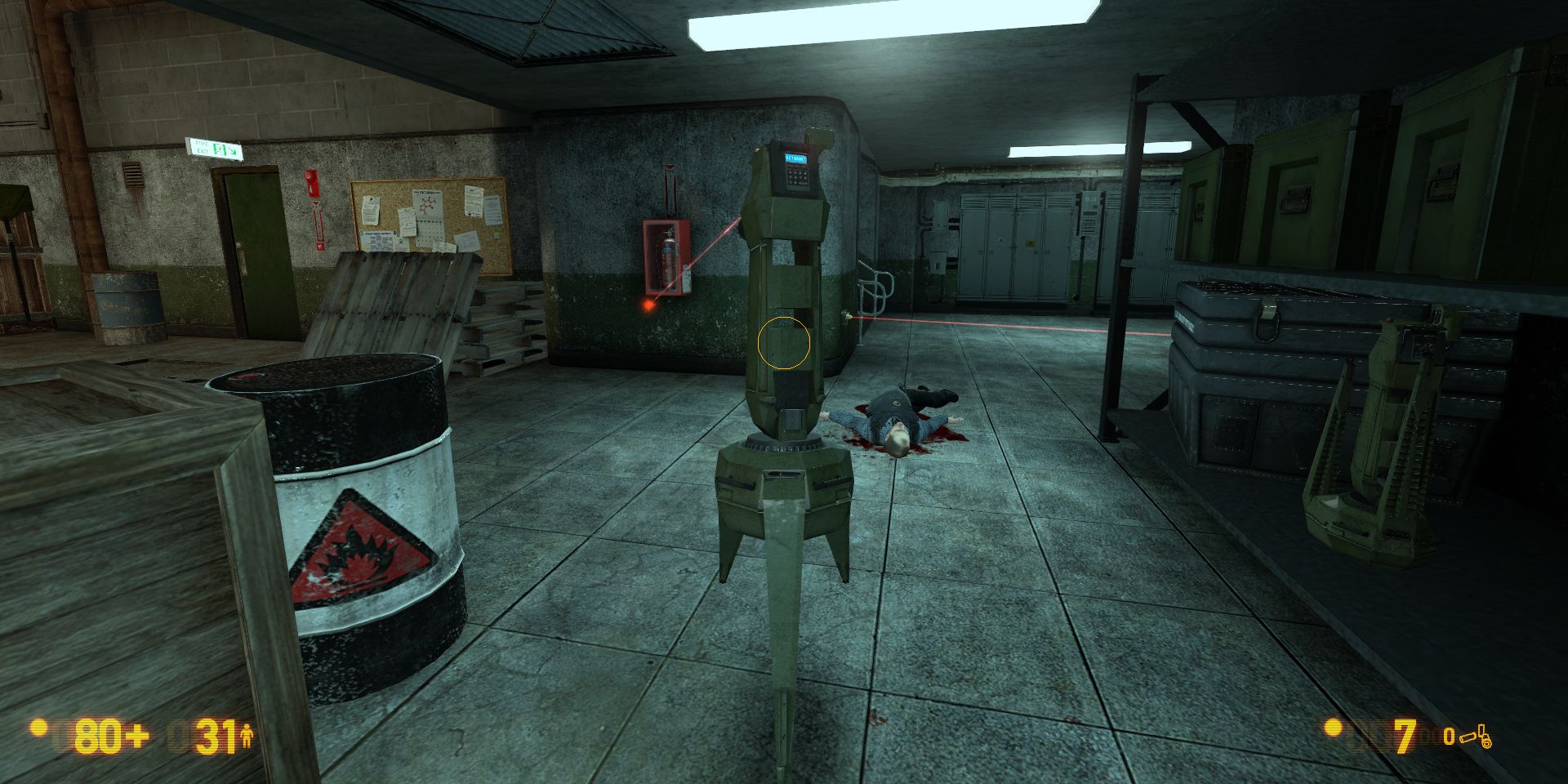
One of the biggest changes in Black Mesa was the decision to utilize mechanics introduced in Half-Life 2. The sequel allowed players to manipulate objects in the world, such as crates and barrels. Black Mesa reintroduced this aspect of gameplay. In addition to simply being able to move everyday objects, it also allows the player to adopt a combat strategy first introduced in Half-Life 2.
Half-Life had several moments where, in addition to fighting marines, Gordon would have to avoid or disable their automated turrets. Half-Life 2 brought back similar turrets, but also allowed Gordon to use them to his advantage. He could place reprogrammed turrets into positions where they would provide supporting fire. Black Mesa decided to include this aspect of gameplay. Gordon can't reprogram turrets this time, and they'll still attack him if he gets in front. But if he can reach them from behind, Gordon can move turrets into tactically advantageous positions.
2 Revamping and Providing More Detail In Xen
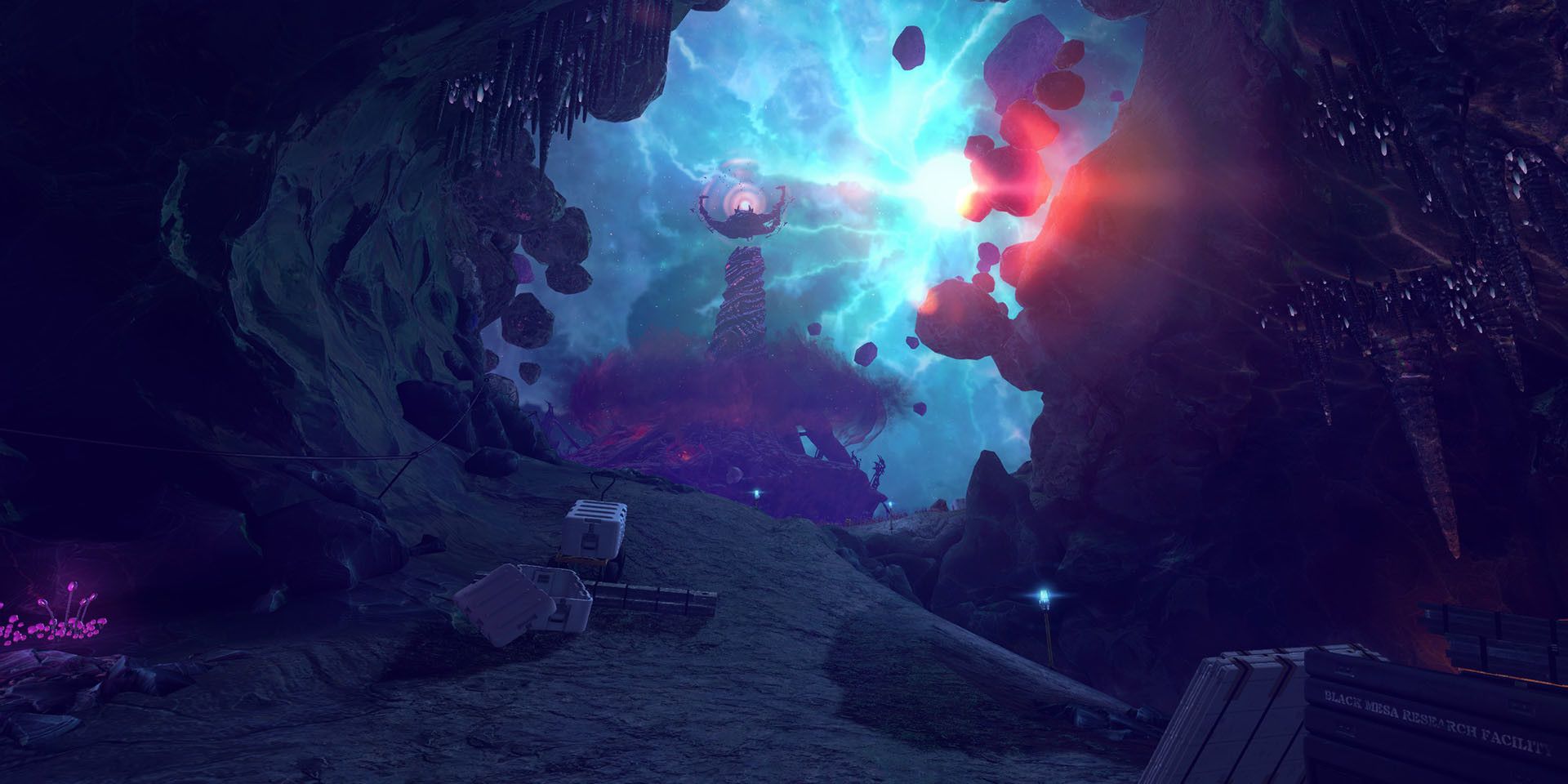
The final stretch of both the original Half-Life and Black Mesa takes place in Xen, a border world between dimensions. This area was a series of islands apparently floating in space, featuring puzzles that forced the player to navigate alien industrial facilities. It gained a reputation as a weaker part of the original Half-Life, so Crowbar Collective took on the ambitious task of trying to improve the Xen levels. They did a complete overhaul, turning Xen into a sort of alien garden world. It's beautiful in its own way, but still a dangerous place.
RELATED: Black Mesa: Blue Shift Brings Gearbox's Half-Life Up To Scratch In March
The industrial parts of Xen also receive more detail. Previously unexplained facilities are shown to create the alien "grunts". Black Mesa also makes a point of emphasizing the use of slave labor, as the player can see that the aliens known as "controllers" are responsible for, well, controlling slaves.
Players also see more of how Xen and Black Mesa's stories tie together. Gordon encounters remnants of previous expeditions to Xen, solving puzzles that require him to navigate old research stations. It is also hinted that the Nihilanth is just as curious about Black Mesa. The player can find specimens stored in alien laboratories, including everything from outdated computers to the preserved remains of security guards and scientists.
1 Increasing Boss Fight Difficulty
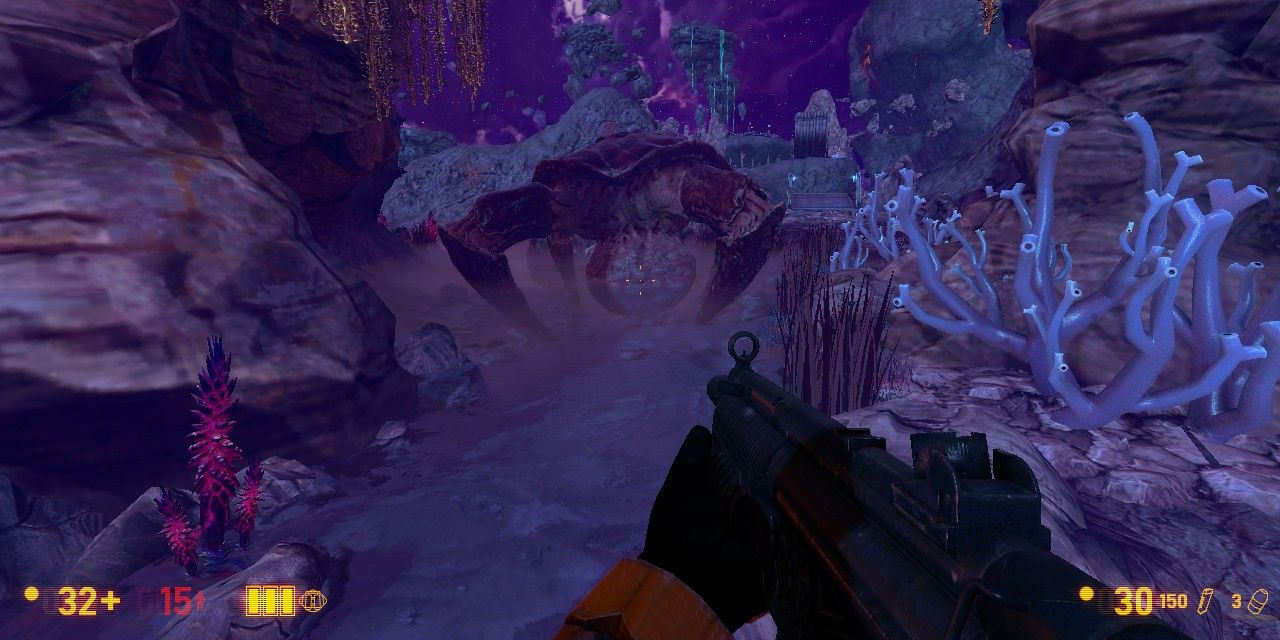
Half-Life had a lot of bizarre encounters, but of one the best known is the encounter with a strange alien known as the "Gonarch". This monstrosity resulted from the development team's idea to take a massive armored spider and give it a giant testicle. In both versions, the Gonarch acts as a boss that Gordon must overcome before his final confrontation with the Nihilanth.
The original Gonarch was tough, but its sequence was fairly short. The fight consists of alternating between open stages where the player does damage, and stages of pursuing the creature through tunnels. Finally, the player reaches a cave where they make their last stand.
Black Mesa makes the Gonarch much more intimidating. The boss fight is much longer, with the Gonarch chasing Gordon rather than the other way around. Instead of moving through tunnels, the Gonarch pursues Gordon through a network of caves full of obstacles such as high cliffs and crystal barriers. It feels impossible to escape, especially when Gordon's weapons seem to do minimal damage. The emphasis on tighter spaces and more varied environments means Gordon has to spend more time thinking on his feet.
NEXT: YouTuber Has Posted Daily Updates About Half-Life 3 for Over 3 Years

